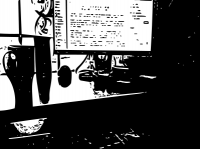On Writing: Why Prewriting Matters
August 12, 2016
 In the past, my writing style typically leaves out the all important first stage of writing—pre-writing. When I write, I tend to write and then rewrite but rarely ever do I engage in pre-writing.
In the past, my writing style typically leaves out the all important first stage of writing—pre-writing. When I write, I tend to write and then rewrite but rarely ever do I engage in pre-writing.
Needless to say, when I started taking creative writing classes at UMass Amherst UWW, I learned that I was cutting out an integral part of the writing process. Jumping right into the writing phase works if you know what you are going to write about, but when you’re stuck pre-writing frees up space and opens up the creative channels.
Reading Chapter 1 of Connie Griffin’s text, To Tell The Truth in my Magazine Writing class gave me a keener understanding of how to use pre-writing as a strategy to break free from writer’s block. The creative process needs the freedom to be expressive, and pre-writing can be seen as a fun exercise in letting go, while also trusting one’s subconscious in a “nonjudgmental and forgiving” way. (p. 5)
The Getting Started (p. 6 – 7) section in Chapter 1, helped me to understand that pre-writing is comparable to a dancer warming up with exercise and practice, or a painter sketching in a rough outline on his canvas in preparation for creating his painting using the tools of his craft. When seen in that light, I suddenly found how pre-writing should and could fit into my process.
Pre-writing is an exercise writers used to open up the creative process. It is a viable exercise in learning to trust one’s own voice, perspective and views. Too often, the writer, myself included, like other artists, feel self-doubt in their ability to create tangible art. Utilizing a fuller process of writing, which includes the three key stages of pre-writing, writing and rewriting, becomes a valuable tool in the process of writing that is vital for successful storytelling in nonfiction as well as fiction.
Griffin’s text, Chapter 1, has a paragraph on “storying” which also helped me to identify my lifelong habits of verbal “storying” that does not always make it to the page, but is longing to find its way there. (p. 9) Our oral histories are the stories captured in our mind that a ripe and plentiful material for written stories. Developing those oral histories on to the page is a great exercise for any writer. Here we often find some of our best material, especially in the memoir genre.
If you’re looking for a good book to help you jump start your work as a writer, I highly recommend Connie Griffin’s text, To Tell The Truth. Chapter 1 of the text helped me to identify my unconscious use of the first person narrative in some of my early political writing as one of the top three writers for John Kerry’s 2004 Presidential Campaign Blog. During my tenure writing for Kerry’s campaign, I wrote several first person accounts of the campaign as a means of putting a more human face on the candidate so that readers can feel connected to the candidate in a more personal way.
I frequently turn to To Tell The Truth now as I work on fine-tuning and expanding my first memoir, which is about half way to the finish line.
* The Desk graphic design image was created with Adobe Capture.






